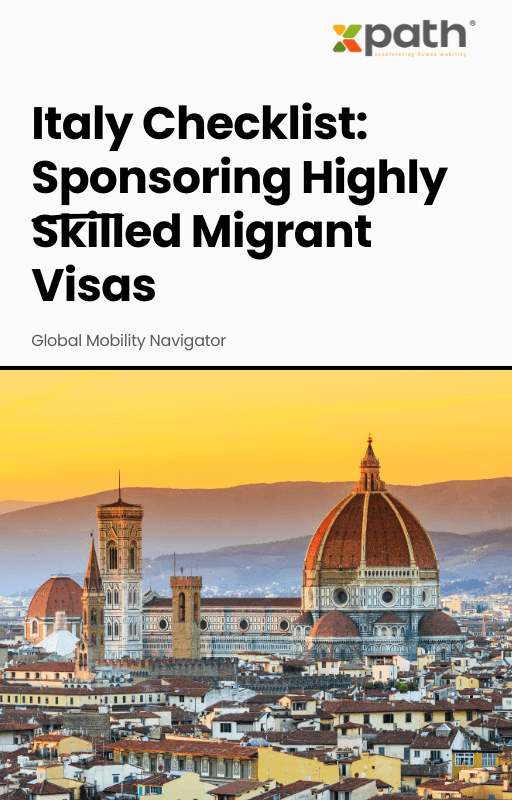Italy Checklist: Sponsoring Highly Skilled Migrant Visas
Grab a copy of a guide to international employee relocation
View E-bookThe E-2 visa, also known as the investor visa, is one of the most popular immigration routes for foreign investors looking to start or expand a business in the United States.
The investor visa allows foreign investors and their families to live and work in the United States for up to five years. You can renew the visa in five-year increments as long as the investor’s business is operating in the United States. Each year, the approval rate gets close to approximately 43,000.
Applying for one requires a significant financial investment on the part of the investor.
The most basic requirement for the E-2 visa is that applicants be from one of the 72 countries with which the US has a valid treaty. There is also a minimum investment requirement.
An E-2 visa requires that a business be an actual operating enterprise and that the applicant make a substantial investment. Although the United States Citizenship and Immigration Services (USCIS) does not specify a minimum investment amount, E-2 investors typically invest at least $100,000 in their business. The investor cannot be solely a source of capital in order to qualify for the E-2 visa. They must also hold a position at the company that allows them to develop and direct the company.
Prior to the Covid-19 pandemic, obtaining an E-2 visa could take several months. Wait times have increased dramatically since 2020. As a result of the delays, investors have been stranded outside the country and away from their U.S.-based businesses.
Following the submission of E-2 visa application documents, investors need to attend a visa interview. This is typically held in a U.S. embassy or consulate located abroad in the applicant’s home country. An immigration officer conducts an in-person interview after an applicant has applied through the embassy or consulate.
The coronavirus pandemic forced US embassies and consulates around the world to close for a period of time. When they reopened, they did so with limited capacity. As a result, overseas E-2 applications have slowed to a trickle.
Interviews are now taking longer to schedule. Many investors are waiting for an E-2 visa for a year or more. Investors renewing their E-2 visas may be eligible for an interview waiver.
Nonetheless, investors seeking new E-2 visas are unable to obtain a waiver, and consulates are unable to conduct online interviews.
While awaiting visa approval, some investors have entered the United States as business visitors. The B-1 and B-2 visas are short-term visas. They allow the holder to visit the United States for business or pleasure. The B-2 visa is for tourism, such as vacationing or visiting family. The B-1 visa is for business activities, such as consulting with business associates and negotiating a contract.
Canadian investors, who are visa-exempt, can enter the United States without a B-1 visa and stay for up to six months. Investors from visa-exempt countries such as the European Union, Commonwealth countries, and Japan can stay in the United States for 90 days. Finally, investors from non-visa-exempt countries can apply for a B-1 visa, but they must first schedule appointments at US consulates. If they obtain the visa, they will be able to stay for only six months.
This denial is based on an unwritten rule. It prevents Canadians from visiting the United States for more than six months in any calendar year. Similar requirements apply to investors from other visa-exempt countries. When their B-1 visa expires after 90 days, they may be able to re-enter the United States once or twice. However, there is a time limit on how long they can stay.
Professionals in the immigration law industry would like to see E-2 visa applicants granted permission to stay in the United States for up to a year, with the option to renew for another six months.
While applicants wait for in-person interviews in other countries, an 18-month temporary stay in the United States can be critical for investors who need help managing their businesses in the United States. This short-term solution would help foreign investors while they wait for E-2 visa processing times to return to normal.
Source: worldwideerc.org
Previous article

Italy Checklist: Sponsoring Highly Skilled Migrant Visas
Grab a copy of a guide to international employee relocation
View E-book